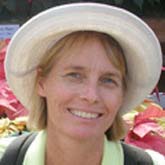Summary
This research project aims to evaluate long-term vegetation response to humans and environmental factors in Phoenix, AZ. Through research in natural systems, we know that vegetation affects ecosystem functioning and the associated amenities, and the same holds true in cities. In desert ecosystems, vegetation patterns and the associated ecosystem functions are driven primarily by precipitation and temperature, but in urban ecosystems, human decisions trump natural processes in determining the distribution of plants. Because of human management in urban vegetation, we think the recent real estate crisis will have had repercussions beyond the economic arena, down to biodiversity and patterns of urban vegetation.
Our overall goal is to investigate the following line-of-inquiry for the greater Phoenix area using data from Central Arizona-Phoenix Long-Term Ecological Research (CAP LTER):
(1) What patterns exist in urban plant diversity and composition? What were the key socioeconomic and biophysical drivers of vegetation spatial patterns in 2010? What role did the recent real estate crisis play in vegetation patterns?
(2) How have urban vegetation patterns changed through time from 2000 to now? How do these patterns vary among landcover types? Are there changes in dominant species?
(3) Are urban landscape patterns resilient to fluctuations in water availability under socioeconomic stress? Can we identify threshold behavior in land use and water usage patterns?
We are approaching these questions of tomorrow’s complex environmental and sustainability issues using CAP LTER Survey 200 data and an interdisciplinary toolkit of geography, mathematical modeling, and ecology. Increasing our knowledge of how vegetation will respond to urbanization is fundamental to demonstrating the value of urban ecosystem services to human well-being. This project will be able to inform efforts to use vegetation to mitigate the urban head island effect, sequester carbon, improve air quality, and decision regarding water availability and quality.



 Julie Ripplinger
Julie Ripplinger
 Janet Franklin
Janet Franklin